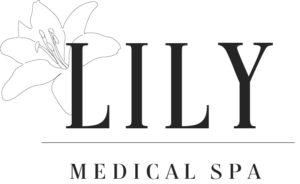Introduction
Oxygen therapy has significantly evolved over the years, enhancing patient care and outcomes across various medical conditions. As technology advances and medical understanding deepens, the future of oxygen therapy promises exciting trends and innovations that could revolutionize the way oxygen is administered, monitored, and personalized for individual patients.
Personalized Oxygen Delivery
One of the most promising trends is the move towards personalized oxygen therapy. Through advanced monitoring technologies, healthcare providers can assess a patient’s oxygen needs in real time and tailor oxygen delivery accordingly. This ensures that patients receive the optimal amount of oxygen, reducing the risk of overuse and enhancing treatment effectiveness.
Smart Oxygen Delivery Devices
Emerging technologies are paving the way for smart oxygen delivery devices. These devices can adjust oxygen flow rates based on a patient’s oxygen saturation levels and activity levels. Smart devices also have the potential to send real-time data to healthcare providers, enabling remote monitoring and timely interventions.
Wearable Oxygen Monitoring
Wearable sensors that continuously monitor oxygen saturation and other vital signs are on the horizon. These devices provide patients and healthcare professionals with valuable insights into a patient’s oxygen levels, allowing for proactive adjustments to oxygen therapy and early detection of potential complications.
Portable Oxygen Concentrators (POCs) Advancements
Portable oxygen concentrators are becoming smaller, lighter, and more efficient. As these devices improve, patients will enjoy greater freedom and mobility while receiving oxygen therapy. Enhanced battery life and quieter operation contribute to a better quality of life for individuals who require oxygen support.
Hyperbaric Oxygen Therapy (HBOT) Innovations
Hyperbaric oxygen therapy is seeing advancements in both clinical applications and technology. Researchers are exploring its potential benefits for various conditions, including wound healing, neurological disorders, and sports-related injuries. Innovations in hyperbaric chamber design and treatment protocols are improving its accessibility and effectiveness.
Gene and Cellular Therapies
In the future, oxygen therapy might be combined with gene and cellular therapies to target specific conditions at the molecular level. These therapies could enhance the body’s ability to utilize oxygen, promoting tissue repair and regeneration. This groundbreaking approach holds potential for treating complex diseases and injuries.Integration of Artificial Intelligence (AI)Artificial intelligence is poised to play a pivotal role in optimizing oxygen therapy. AI algorithms can analyze patient data, predict oxygen needs, and adjust treatment parameters in real time. This level of automation and data-driven decision-making enhances treatment accuracy and patient outcomes.
Telemedicine and Remote Oxygen Therapy
Telemedicine is expanding access to medical care, including oxygen therapy. Patients can receive consultations, treatment adjustments, and monitoring remotely, reducing the need for frequent in-person visits. This approach is particularly beneficial for patients in remote or underserved areas.
Regenerative Medicine and Oxygen Enhancement
The intersection of regenerative medicine and oxygen therapy holds great promise. Oxygen can be used to enhance the viability and function of regenerative cells, optimizing tissue repair and healing. This combination has potential applications in orthopedics, wound care, and tissue engineering.
Conclusion
The future of oxygen therapy is shaped by technological advancements, personalized care, and innovative approaches. As these trends unfold, patients can expect more precise, efficient, and tailored oxygen therapy experiences.With the potential to improve treatment outcomes and quality of life, these innovations are set to revolutionize the field of oxygen therapy and its impact on healthcare.

